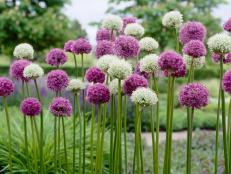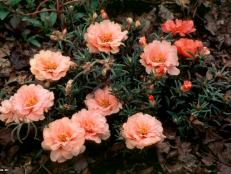Drought-Tolerant Can be Colorful + Beautiful
Whether you’re dealing with water restrictions or lack of rain, it’s still possible to create the yard of your dreams with drought-resistant landscaping techniques. You can craft inexpensive drought-tolerant landscaping using simple methods that aren’t tough to implement or adopt practices that demand a little more time and effort.
This pretty front yard fits into the inexpensive drought-tolerant landscaping category. A planting bed brims with colorful, low-water-use plants including perennial Russian sage (Perovskia atriplicifolia ‘Denim ‘n Lace’) and annual zinnias. Both of these bloomers boast drought and heat tolerance and stage a stunning show even when the rain gauge is on the low side. Keep reading for more drought-tolerant landscaping ideas.












